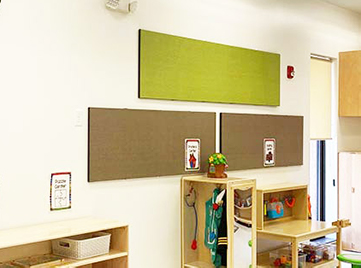Pediatric Healing Space: The Ultimate Youth Hospital Design
Market: Healthcare
Why do children’s hospitals exist?
Typically when we have to spend the night in the hospital, our goal is to heal and do it fast. However, in the ultra-sterile surroundings that a hospital typically provides, kids can struggle with their healing. Children need an environment that helps them enhance their health by stimulating them in different ways. For this reason, doctors needed a space geared specifically towards pediatric healing.
The concept of a children’s hospital formed to give kids/infants the necessary resources for their optimal health. These environments include experts specialized in many forms of pediatric care and have plenty of kid-friendly creature comforts as well.
By incorporating proper healing elements in the design process, the doctors and patients can set themselves up for more success as they work with each other and properly execute the child’s development.

Photo source: rawpixel.com – www.freepik.com
Why is child development important in a hospital setting?
In the early years of a person’s life, both physical and mental maturing is especially crucial. Early child development before the age of five can help determine how the children process the rest of their lives. Since mental and physical health all tie into each other in the human body, a kid’s physical condition needs as much attention as their brain does to allow growth.
For instance, good nutrition, sleep, and exercise are all consistently important factors for a growing body. If these areas are stunted for reasons such as illness or injury, it could hinder a kid’s growth or capabilities. Many pediatric facilities offer a place to recover while allowing their development to grow during extended hospital stays.
Another monumental moment of a child’s life is during the birth itself. Most hospitalizations in a pediatric ward come from pregnancy labors. In these situations, if the newborn has complications and doesn’t have fast access to the necessary resources, serious and potentially long-lasting consequences could take place.
The environment in which a child grows constantly teaches them how to adapt to the world around them. From toys to simply basic life necessities, their space needs to support this development. In a hospital setting specifically, this rule is especially important. When young kids get sick, they tend to need specialized care in many facets.
Here are some ideas of how to design your space with pediatric healing in mind.
Tips for improving your pediatric healing space: 
-
Good Acoustics
There’s no denying it, kids can get loud when they forget to use their “inside voices.” Since these hospitals will likely hold kids with a wide range of illness/injury severity, some of the occupants will be louder than others. How do we help prevent disruptive noise from spreading through the facility? Utilizing acoustical devices is a good way to start.
While complete soundproofing is challenging and often very expensive to do, there are plenty of sound-absorbing devices that can help limit excess noise. Acoustical wall panels in each of the rooms are a good example of keeping each room quiet enough so patients can rest. And then, of course, in the double rooms, a curtain or medical partition will absorb the sound while giving the kids privacy.
-
Interactive Play Areas
Depending on the severity of the illness, laughter and distraction can sometimes help the healing process. Even having your favorite toy when you were sick growing up helped soothe us all at some point. Thus, a pediatric hospital should have a few play areas accessible for patients and their young family members. For some children who have longer stays in the hospital, these spaces will be instrumental for their general health and mood-boosting.
-
Outdoor Healing Terrace
Another form of play is to include natural elements in an outdoor terrace. Fresh air and sunlight have been known to increase a person’s healing.

Photo Source: wirestock – www.freepik.com
Having a dedicated outdoor space in mind when designing a children’s hospital is incredibly important to allow patients access to these natural resources. Since many of these hospitals have multidisciplinary units, natural elements can also help behavioral patients with their sensory needs without purchasing new items.
-
Multidisciplinary Teams
What is a multidisciplinary team? In a hospital setting, these teams include many types of healthcare workers in one spot. These workers could include doctors, behavioral therapists, social workers, or psychiatrists. By having all these disciplines in one space, a patient can get the best care possible for their health needs. This also helps prevent parents from driving to multiple places for more than one type of illness or disability.
Pediatric hospitals and healing spaces are excellent resources for young patients’ health. By designing a space with all their needs in mind, you give these kids the best chance at their own recovery.